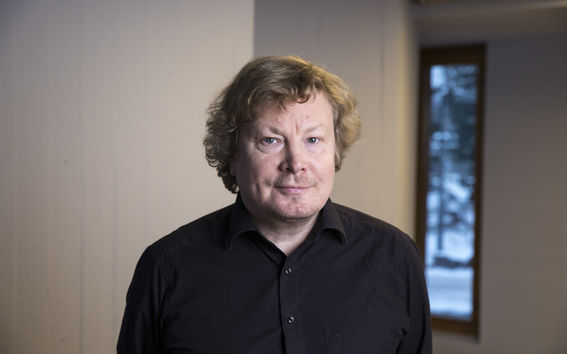The relationship between fact and fiction is changing

Artistic Intelligence Research Alternator AIRA, which will be seen at the Research Pavilion in Venice this year, is an example of collaboration in artistic research. It is an “artistic thinking research machine” that explores new fiction and develops parallel worlds.
In practice, AIRA is a five-person group consisting of movie, media and staging industry artist researchers. Each researcher is doing their own project but they are furthered together, explains the group’s representative Harri Laakso, professor of photography research at Aalto University.
“Our work is process-like and can take unexpected turns”, he says. According to Laakso, the idea of multiple parallel worlds has recently featured more and more in contemporary art and pop culture. Familiar examples from TV series include the American series Stranger Things, in which there is an upside-down shadow world beneath the visible world and the German show Dark, in which people are living in several eras simultaneously.
In contemporary art we have Damien Hirst’s Treasures from the Wreck of the Unbelievable, seen two years ago in Venice, in which the artist created an entire lost world whose remains were supposedly found in a sunken shipwreck. In reality, the gigantic bronze statues were made of fiberglass.
Laakso believes the relationship between fact and fiction is changing. People are not talking about the post-truth era for nothing.
“Our era is no more untruthful than before, but fiction or truth are no longer as value-loaded as they used to be. We are interested in stirring this terrain a little.”
Getting up close to phenomena through art
The AIRA group is approaching its research subject from several different perspectives. Harri Laakso has rediscovered the 1970s horror short story and film Don’t Look Now, which takes place in Venice. He is going to produce at least an audio drama based on the short story, which people will be able to listen to at the Research Pavilion and on their phones in the story and film’s locales in Venice.
The other group members are working on, for example, video installations and performative works. Artistic research does not focus on the works of art, however. Instead, the research subject is always some phenomenon existing in the world, outside the work of art. According to Harri Laakso, the work of art is rather a way to approach phenomena when words are not enough.
“Investigatory works of art are open frames within which things can occur”, he says.
Read more about the Research Pavilion: www.researchpavilion.fi
The Research Pavilion is an ongoing project created and hosted by the University of the Arts Helsinki. Research Pavilion #3 is created in cooperation with the Louise and Göran Ehrnrooth Foundation and international partner institutions: Aalto University, Valand Academy of Arts at the University of Gothenburg, University of Applied Arts Vienna, andInterlab Hongik University Seoul.
Read more news

DeployAI Partners Gather for Heart Beat Meeting in Helsinki
The European DeployAI project's partners gathered for the Heart Beat meeting hosted by Aalto University Executive Education in Helsinki.
Get to know us: Associate Professor Maria Sammalkorpi
Sammalkorpi received her doctorate from Helsinki University of Technology 2004. After her defence, she has worked as a researcher at the Universities of Princeton, Yale and Aalto.
Aalto computer scientists in ICML 2024
Computer scientists in ICML 2024